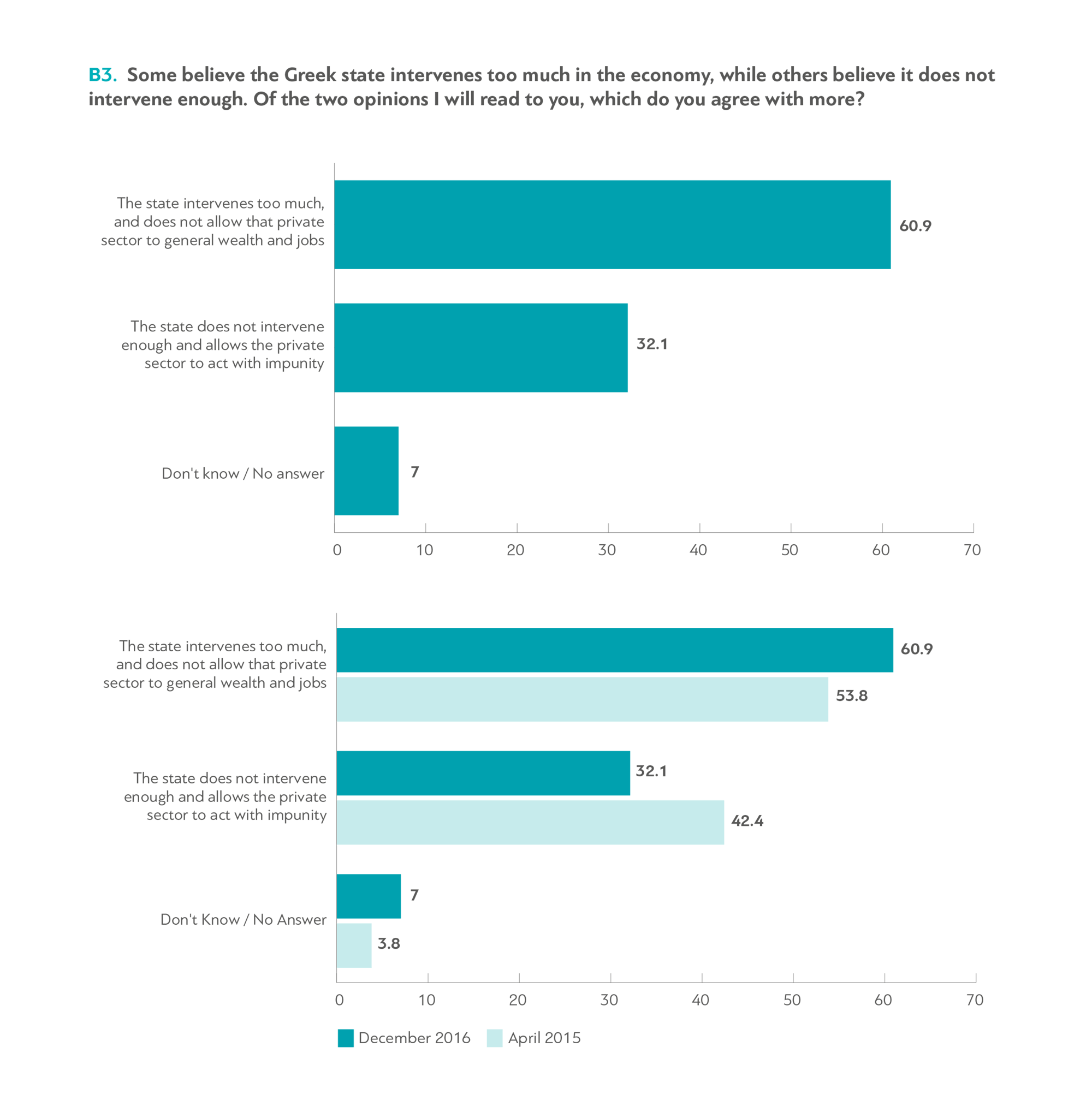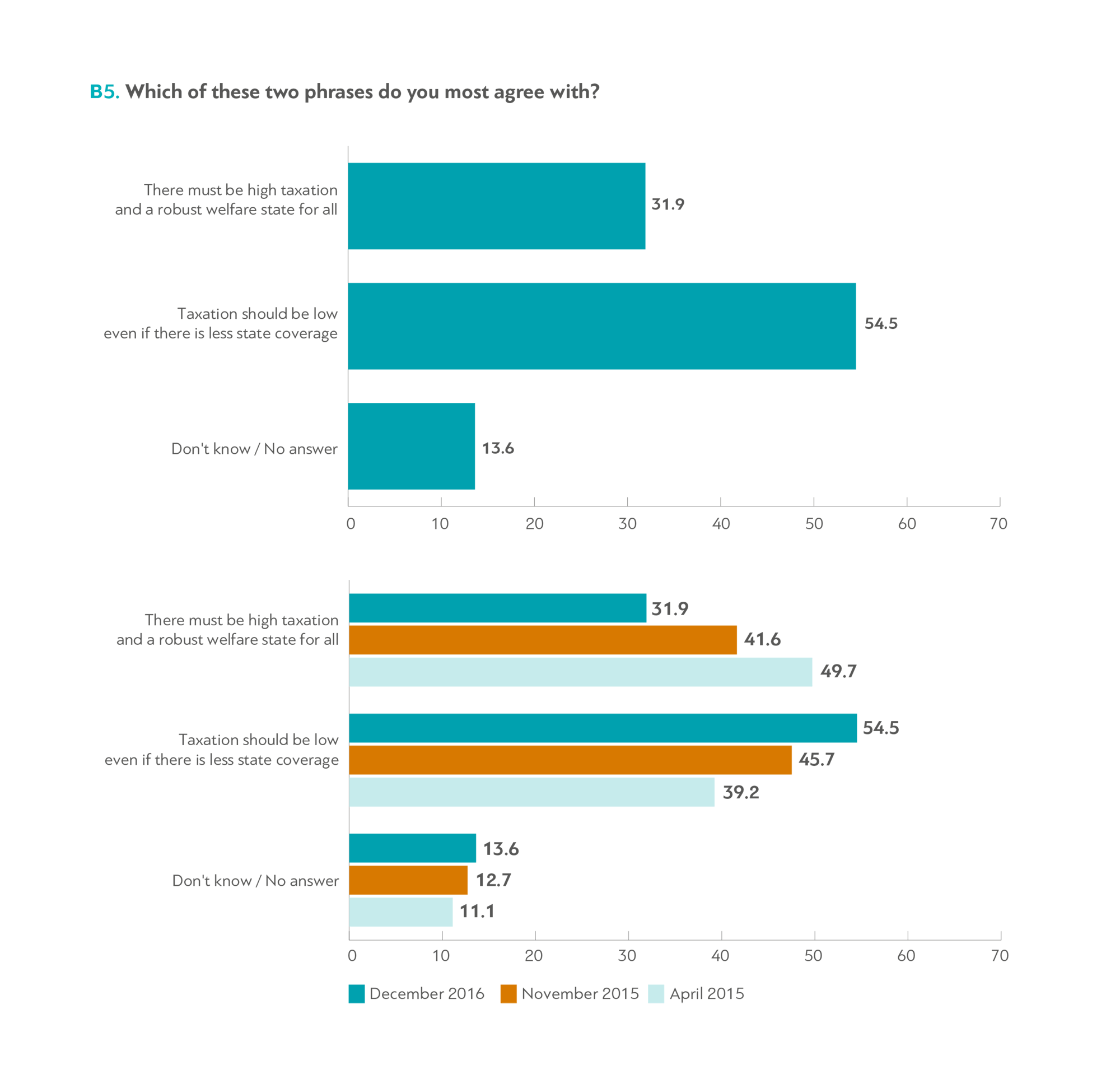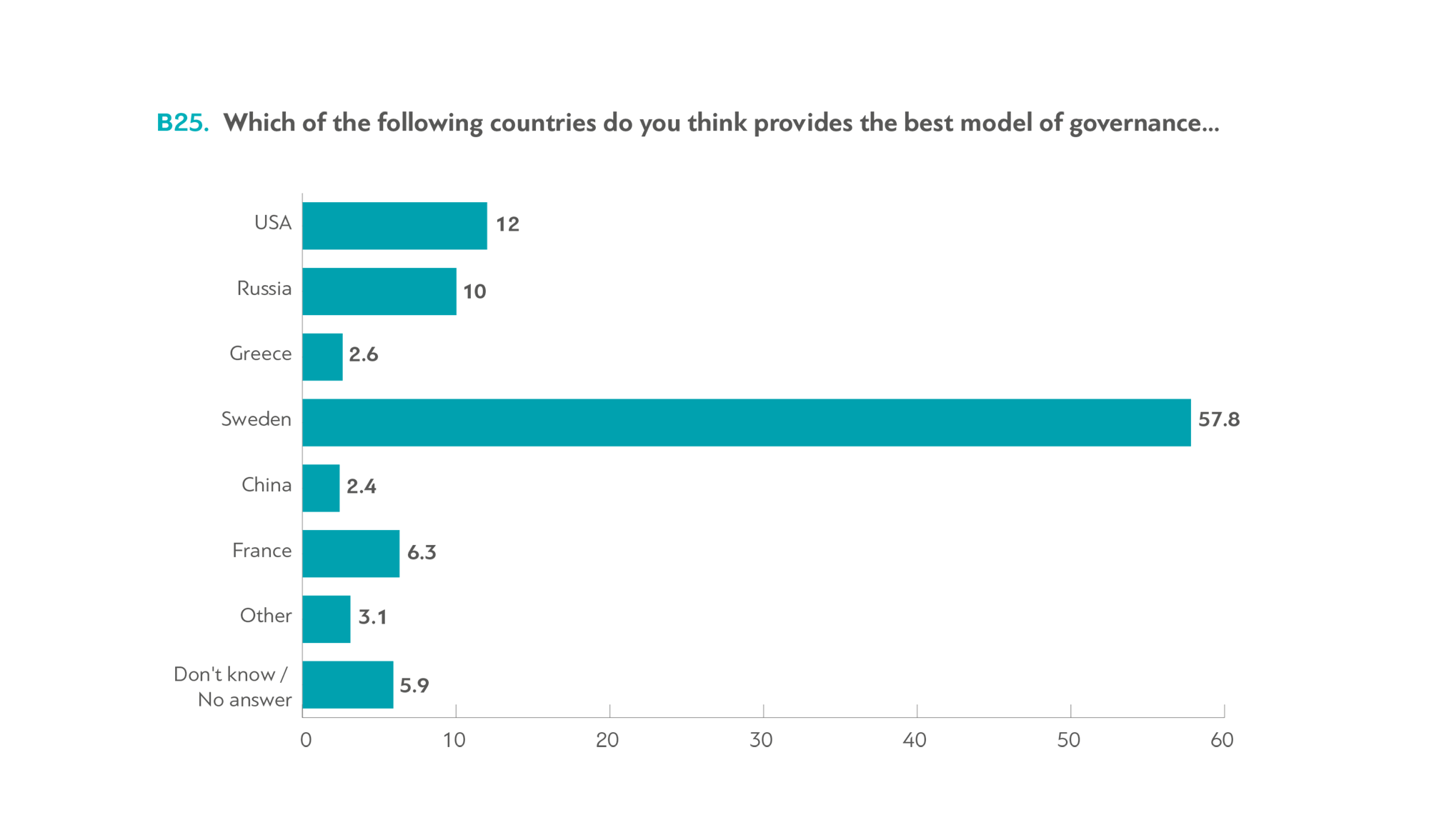What country has the world’s worst government? It’s not an easy question. There may be a different set of answers based on whether the focus is political oppression or economic mismanagement.
Regardless of methodology, there are some nations that will probably show up on just about any list.
Today, though, I want to make the case for Venezuela. That unfortunate country used to be rich compared to other Latin American nations, but decades of bad policy have now morphed into awful policy. The long-run drop in economic freedom – from 10th-freest to 159th-freest – is staggering.

Wow. Combined with growing political oppression, the country may zip through the fourth circle of statist hell and soon find itself in the fifth and final circle.
To grasp the horror of the situation, let’s look at what’s happened since April, when I put together a column of 28 headlines to capture the death throes of Venezuelan socialism.
Now, in just the last six months, we have another 28 examples.
On May 30, a column in the New York Times catalogued the misery in Venezuela.
…huge protests rocking Venezuela… President Nicolás Maduro has responded with an iron fist. More than 50 people have been killed, 1,000 injured, and 2,700 arrested, and that last figure doesn’t include  the country’s more than 180 long-term political prisoners. …economic and humanitarian crisis. It is hard to overstate the severity of the suffering of the 31 million people of this once-rich country. …hospitals lack 98 percent of needed medical supplies and 85 of 100 drugs are totally unavailable. As a result, in the last year, some 11,500 infants died before their first birthday… Cases of malaria are up 76 percent and diphtheria, which had been eradicated 20 years ago, has returned to Venezuela.
the country’s more than 180 long-term political prisoners. …economic and humanitarian crisis. It is hard to overstate the severity of the suffering of the 31 million people of this once-rich country. …hospitals lack 98 percent of needed medical supplies and 85 of 100 drugs are totally unavailable. As a result, in the last year, some 11,500 infants died before their first birthday… Cases of malaria are up 76 percent and diphtheria, which had been eradicated 20 years ago, has returned to Venezuela.
On June 1, we learned about the bravery and ingenuity of protestors.
Daniella Liendo is gaining frontline practical experience as she completes her medical studies. …On the streets of Caracas this week, the second-year student treated a demonstrator who had been shot at close range  with a marble pellet in the city’s Chacao neighbourhood. “Once we get to a patient we must decide with the more senior doctors if [the injured] must be taken away for treatment,” she said. “The most common problem is asphyxia from the tear gas. We’ve also had a lot of head traumas and burns to deal with.” …An exodus of Venezuelan medical graduates has meant that even those with the most basic training are in demand. An estimated 15,000 doctors have left to work abroad since 2003.
with a marble pellet in the city’s Chacao neighbourhood. “Once we get to a patient we must decide with the more senior doctors if [the injured] must be taken away for treatment,” she said. “The most common problem is asphyxia from the tear gas. We’ve also had a lot of head traumas and burns to deal with.” …An exodus of Venezuelan medical graduates has meant that even those with the most basic training are in demand. An estimated 15,000 doctors have left to work abroad since 2003.
On June 2, Reuters exposed the gilded lives of the government elite.
One is shown blowing a kiss from a private jet. Another is seen posing in front of a store of luxury jeweler Cartier in China. Others grin as they tuck into a plate of lobster or a massive birthday cake. Venezuelan activists are increasingly posting details of locations and lifestyles  of leftist officials and their families, depicting them as thriving off corruption while the population struggles to eat in a devastating economic crisis. …One Twitter account published photos purportedly showing the wife of Vice President Tareck El Aissami enjoying champagne and lounging on a pristine beach with her sisters. In another case, an alleged lover of a powerful Socialist Party official is shown on trips to the Middle East. Venezuela’s opposition accuses officials of profiting from currency controls and a decade-long oil boom to fill their pockets. The opposition-led congress estimates that at least $11 billion have “disappeared” from state-run oil company PDVSA .
of leftist officials and their families, depicting them as thriving off corruption while the population struggles to eat in a devastating economic crisis. …One Twitter account published photos purportedly showing the wife of Vice President Tareck El Aissami enjoying champagne and lounging on a pristine beach with her sisters. In another case, an alleged lover of a powerful Socialist Party official is shown on trips to the Middle East. Venezuela’s opposition accuses officials of profiting from currency controls and a decade-long oil boom to fill their pockets. The opposition-led congress estimates that at least $11 billion have “disappeared” from state-run oil company PDVSA .
On June 5, Fox reported on women driven to prostitution by poverty.
As a humanitarian and political crisis in neighboring Venezuela deepens, a growing number of Venezuelan women are working in bars and brothels across Colombia. “I didn’t do this in Venezuela. I never ever imagined I’d be doing this in Colombia,” said Maria, who…charges $17 for 15-minutes of sex, and the money earned is spent on buying medicine for her mother who has cancer. …According to Asmubuli, a Colombian sex workers association, currently there are around 4,500 Venezuelan sex workers in the country. …It’s not just women who say they have no option but to sell their bodies for sex, but young Venezuelan men too. Dorian, 25, started working in Bogota’s Lourdes Park about two weeks ago. “It’s disappointing. I’m disappointed in myself,” said Dorian, a business studies university graduate unable to find a job and with no money to pay for rent and food.
who…charges $17 for 15-minutes of sex, and the money earned is spent on buying medicine for her mother who has cancer. …According to Asmubuli, a Colombian sex workers association, currently there are around 4,500 Venezuelan sex workers in the country. …It’s not just women who say they have no option but to sell their bodies for sex, but young Venezuelan men too. Dorian, 25, started working in Bogota’s Lourdes Park about two weeks ago. “It’s disappointing. I’m disappointed in myself,” said Dorian, a business studies university graduate unable to find a job and with no money to pay for rent and food.
On June 6, we learned about the current regime’s utter depravity.
Norma Camero Reno has been shipping a steady supply of desperately needed medicines from the United States to Venezuela. Reno and other members of her nonprofit, Move Foundation,  pack painkillers, cold medicines and other supplies to be distributed to hospitals, health clinics and churches throughout the beleaguered nation. Two weeks ago, however, that all changed. …Reno discovered that none of the recent medicine shipments had made it to her contacts in the country. …“They are stopping everything from going in,” Reno told Fox News. “They are taking everything for themselves.”
pack painkillers, cold medicines and other supplies to be distributed to hospitals, health clinics and churches throughout the beleaguered nation. Two weeks ago, however, that all changed. …Reno discovered that none of the recent medicine shipments had made it to her contacts in the country. …“They are stopping everything from going in,” Reno told Fox News. “They are taking everything for themselves.”
On June 28, a column in the New York Times condemned Maduro’s brutal regime.
Every day, Venezuelans of all stripes pour into the streets protesting the loss of their freedom and their constitutional rights by a tyrannical regime that condemns them to scarcity, illness, malnutrition and outright hunger. …There has been terrible economic and social destruction. Across 15 years, a trillion dollars’ worth of oil income has been squandered and 80 percent of Venezuelans have fallen into poverty. …Venezuela has become the Zimbabwe of the Americas, a shameless alliance of corrupt politicians and the military acquiescent to the dictates of Cuba. …They have kidnapped the Latin American nation that is richest in oil resources, which they wish to appropriate for themselves, permanently and at whatever human cost it may require.
…There has been terrible economic and social destruction. Across 15 years, a trillion dollars’ worth of oil income has been squandered and 80 percent of Venezuelans have fallen into poverty. …Venezuela has become the Zimbabwe of the Americas, a shameless alliance of corrupt politicians and the military acquiescent to the dictates of Cuba. …They have kidnapped the Latin American nation that is richest in oil resources, which they wish to appropriate for themselves, permanently and at whatever human cost it may require.
On July 3, we learned that poor people are waking up to the downside of socialism.
In Caracas, the rich and poor are suddenly less divided. For most of Venezuela’s two-decade socialist experiment, the city’s wealthier, whiter east has been the hotbed of anti-government sentiment.  Now, noisy protests are erupting in poorer-but-calmer western neighborhoods that were strongholds for embattled President Nicolas Maduro as crime explodes and medicine and food are scarce and expensive. …They’re increasingly demanding a change in government, infuriated by mismanagement… “Everyone protests, without differences, because the hunger of the stomach and the hunger for democracy have been united,” said Carlos Julio Rojas, a La Candelaria activist… Services are shaky in Caracas, particularly in the slums that surround the capital. Water pipes go dry for days at a time, trash sits rotting and lights go out.
Now, noisy protests are erupting in poorer-but-calmer western neighborhoods that were strongholds for embattled President Nicolas Maduro as crime explodes and medicine and food are scarce and expensive. …They’re increasingly demanding a change in government, infuriated by mismanagement… “Everyone protests, without differences, because the hunger of the stomach and the hunger for democracy have been united,” said Carlos Julio Rojas, a La Candelaria activist… Services are shaky in Caracas, particularly in the slums that surround the capital. Water pipes go dry for days at a time, trash sits rotting and lights go out.
On July 20, the Economist shared news of despair about the plight of Venezuelan women.
Barbara and her cousin Sophia have more serious business: they hope to make enough money from selling sex to live decently after fleeing Venezuela, where survival is a struggle. Barbara, who is 27,  prefers her former occupation as the owner of a nail and hair business in Caracas, Venezuela’s capital. But polish and shampoo are as hard to find as food and medicine, and so she has come to Medellín. In an hour a sex worker can make the equivalent of a month’s minimum wage in Venezuela. Colombian pesos “are worth something”, unlike Venezuela’s debauched currency, the bolívar, Barbara says. “At least here one can eat breakfast and lunch.” …Some 4,500 Venezuelan prostitutes are thought to be working in Colombia… The sex workers are joined by electricians, mechanics, empanada vendors—all of whom are seeking a way to cope with their country’s shortages and queues, and an inflation rate expected to exceed 700% this year.
prefers her former occupation as the owner of a nail and hair business in Caracas, Venezuela’s capital. But polish and shampoo are as hard to find as food and medicine, and so she has come to Medellín. In an hour a sex worker can make the equivalent of a month’s minimum wage in Venezuela. Colombian pesos “are worth something”, unlike Venezuela’s debauched currency, the bolívar, Barbara says. “At least here one can eat breakfast and lunch.” …Some 4,500 Venezuelan prostitutes are thought to be working in Colombia… The sex workers are joined by electricians, mechanics, empanada vendors—all of whom are seeking a way to cope with their country’s shortages and queues, and an inflation rate expected to exceed 700% this year.
On July 30, a column in the Wall Street Journal analyzed the crumbing of Venezuela.
Hungry, hurting Venezuelans are done talking. The country is in the early stages of civil war. …In polls, some 80% of Venezuelans oppose Mr. Maduro’s “constituent assembly.” But the opposition boycotted Sunday’s election  because they know Cuba is running things, that voter rolls are corrupted, and that there is no transparency in the operation of electronic voting machines. …faith and hope in a peaceful solution has been lost. One symptom of this desperation is the mass exodus under way. On Tuesday the Panam Post reported that “more than 26,000 people crossed the border into Colombia Monday, July 26… But a citizens’ revolt, led by young people whose families are starving, is already under way.
because they know Cuba is running things, that voter rolls are corrupted, and that there is no transparency in the operation of electronic voting machines. …faith and hope in a peaceful solution has been lost. One symptom of this desperation is the mass exodus under way. On Tuesday the Panam Post reported that “more than 26,000 people crossed the border into Colombia Monday, July 26… But a citizens’ revolt, led by young people whose families are starving, is already under way.
On July 31, we got a thorough analysis of economic chaos in Venezuela.
With per capita GDP down by 40% since 2013, Venezuela’s economic catastrophe dwarfs any in the history of the US, Western Europe, or the rest of Latin America.  And yet headline GDP numbers actually understate the magnitude of the economy’s decline. …Venezuelans clearly want out – and it’s not hard to see why. Media worldwide have been reporting on Venezuela, documenting truly horrible situations, with images of starvation, hopelessness, and rage.
And yet headline GDP numbers actually understate the magnitude of the economy’s decline. …Venezuelans clearly want out – and it’s not hard to see why. Media worldwide have been reporting on Venezuela, documenting truly horrible situations, with images of starvation, hopelessness, and rage.
On August 2, the Associated Press published a first-person look at the country’s decline.
The first thing the muscled-up men did was take my cellphone. They had stopped me on the street as I left an interview in the hometown of the late President Hugo Chavez and wrangled me into a black SUV. …I had thought that being a foreign reporter protected me from the growing chaos in Venezuela. But with the country unraveling so fast, I was about to learn there was no way to remain insulated. I came to Caracas as a correspondent for The Associated Press in 2014, just in time to witness the country’s accelerating descent into a humanitarian catastrophe. …the men trained a camera on me for an interrogation. One said that I would end up like the American journalist who had recently been beheaded in Syria. Another said if I gave him a kiss I could go free. …In the end, the secret police cut me loose a few hours after they arrested me, with a warning not to return.
from the growing chaos in Venezuela. But with the country unraveling so fast, I was about to learn there was no way to remain insulated. I came to Caracas as a correspondent for The Associated Press in 2014, just in time to witness the country’s accelerating descent into a humanitarian catastrophe. …the men trained a camera on me for an interrogation. One said that I would end up like the American journalist who had recently been beheaded in Syria. Another said if I gave him a kiss I could go free. …In the end, the secret police cut me loose a few hours after they arrested me, with a warning not to return.
On August 7, a CNN story looked at Venezuela’s looming default.
he country, which is engulfed in crisis, …has other payments coming due in the near future and could fall short on those if the economy continues to tailspin…  “This model is broken, and default is inevitable,” says Siobhan Morden, an expert in Latin American bonds at Nomura Holdings. …Venezuela’s economy continues to spiral our of control. The unofficial exchange rate that most Venezuelans use has more than doubled since late July. Inflation is expected to soar 720% this year and and over 2,000% next year, according to the International Monetary Fund.
“This model is broken, and default is inevitable,” says Siobhan Morden, an expert in Latin American bonds at Nomura Holdings. …Venezuela’s economy continues to spiral our of control. The unofficial exchange rate that most Venezuelans use has more than doubled since late July. Inflation is expected to soar 720% this year and and over 2,000% next year, according to the International Monetary Fund.
On August 13, we learned about the plight of Jews in Venezuela.
Jews in Venezuela are increasingly fleeing the country amid the rising political instability and violence under President Nicolas Maduro, with a growing number decamping for Israel.  Estella and Haim Sadna, a religious couple with four kids from the Venezuelan capital Caracas, described the food scarcity and rampant crime that drove them to move the Jewish state. …While Venezuela once had one of the largest Jewish communities in the region, numbering some 25,000 in 1999, only about 9,000 Jews are believed to remain in the country.
Estella and Haim Sadna, a religious couple with four kids from the Venezuelan capital Caracas, described the food scarcity and rampant crime that drove them to move the Jewish state. …While Venezuela once had one of the largest Jewish communities in the region, numbering some 25,000 in 1999, only about 9,000 Jews are believed to remain in the country.
On August 15, the Miami Herald reported that even the military must beg for food.
Venezuelan soldiers — armed and in uniform — were caught in neighboring Guyana last week begging for food, local police reported, another sign of Venezuela’s deepening hunger crisis.  …Hunger is on the rise in Venezuela, amid triple-digit inflation and the government’s inability to import basic goods. And neighboring Colombia, Brazil and Guyana have seen a spike in Venezuelans looking for food. …That soldiers would cross into Guyana is telling. The two nations have been locked in a centuries-old border dispute over a swath of Guyanese territory known as the Esequibo and are not on good terms.
…Hunger is on the rise in Venezuela, amid triple-digit inflation and the government’s inability to import basic goods. And neighboring Colombia, Brazil and Guyana have seen a spike in Venezuelans looking for food. …That soldiers would cross into Guyana is telling. The two nations have been locked in a centuries-old border dispute over a swath of Guyanese territory known as the Esequibo and are not on good terms.
On August 29, the incompetent brutality of the government was discussed.
…socialist policies exacerbated the oil crisis and created the poverty we see in Venezuela today. …the poorest economies in the world are characterized by oppressive government intervention. …In Venezuela’s case, a government takeover of the oil industry reduced supply, sowing the seeds of future impoverishment. …When Hugo Chavez took power in 1999, he…closed Venezuela’s oil fields to foreign investment and stopped reinvesting oil proceeds in the company. He fired 18,000 workers at PDVSA, replacing professional oil employees with inept but politically loyal workers. …Healthy non-oil industries could have diversified Venezuela’s economy and blunted the impact of falling oil prices. By strangling them, Chavez and his successor, Nicolas Maduro, forced the economy to rely more on oil at precisely the wrong time. …Commentators who dismiss Venezuela’s suffering as being caused by the oil crisis need to explain why other oil-dependent countries have not collapsed. According to the World Bank, seven nations rely more on oil than Venezuela. All seven saw economic growth from 2013 to 2017.
…When Hugo Chavez took power in 1999, he…closed Venezuela’s oil fields to foreign investment and stopped reinvesting oil proceeds in the company. He fired 18,000 workers at PDVSA, replacing professional oil employees with inept but politically loyal workers. …Healthy non-oil industries could have diversified Venezuela’s economy and blunted the impact of falling oil prices. By strangling them, Chavez and his successor, Nicolas Maduro, forced the economy to rely more on oil at precisely the wrong time. …Commentators who dismiss Venezuela’s suffering as being caused by the oil crisis need to explain why other oil-dependent countries have not collapsed. According to the World Bank, seven nations rely more on oil than Venezuela. All seven saw economic growth from 2013 to 2017.
On September 11, it was reported that even the United Nations is appalled by the regime’s actions.
The United Nations human rights chief has said that Venezuelan security forces may have committed “crimes against humanity” against protesters and called for an international investigation. …Zeid said the government was using criminal proceedings against opposition leaders, arbitrary detentions, excessive use of force and ill-treatment of detainees, which in some cases amounted to torture. …Last month, Zeid’s office said Venezuela’s security forces had committed extensive and apparently deliberate human rights violations in crushing anti-government protests and that democracy was “barely alive”. …Venezuela is among the 47 members of the Human Rights Council, where it enjoys strong support from Cuba, Iran and other states.
against opposition leaders, arbitrary detentions, excessive use of force and ill-treatment of detainees, which in some cases amounted to torture. …Last month, Zeid’s office said Venezuela’s security forces had committed extensive and apparently deliberate human rights violations in crushing anti-government protests and that democracy was “barely alive”. …Venezuela is among the 47 members of the Human Rights Council, where it enjoys strong support from Cuba, Iran and other states.
On September 15, we learned more about the depravity of the socialist government.
The association Prepara Familia denounced yesterday the death of 11-year old Cristhian Malavé, contaminated with a bacteria from the hemodialysis unit of the the J. M. de los Ríos Children’s Hospital. He’s the fifth child to die of this cause.  Others die of unattended complications and their records are blurred and their names are lost in view of a State unable to offer a response to our simplest and most urgent needs. …Tamara Suju, head of the Casla Institute, denounced in fron of the OAS the tortures and violations committed by public force officers against 289 people, protesters and citizens. There are complaints of assaults and rapes (with batons or firearms), feces force-feeding, electroshocks, beating, in most cases, and psychological torture, in all of them. The huge majority of victims are men, 79% between 18 and 30 years old. Torture in Venezuela went from selective to massive and no government representative has denied torture cases.
Others die of unattended complications and their records are blurred and their names are lost in view of a State unable to offer a response to our simplest and most urgent needs. …Tamara Suju, head of the Casla Institute, denounced in fron of the OAS the tortures and violations committed by public force officers against 289 people, protesters and citizens. There are complaints of assaults and rapes (with batons or firearms), feces force-feeding, electroshocks, beating, in most cases, and psychological torture, in all of them. The huge majority of victims are men, 79% between 18 and 30 years old. Torture in Venezuela went from selective to massive and no government representative has denied torture cases.
On September 22, the Miami Herald reported on the tragic growth of prostitution.
At a squat, concrete brothel on the muddy banks of the Arauca River, Gabriel Sánchez rattled off the previous jobs of the women who now sell their bodies at his establishment for $25 an hour. “We’ve got lots of teachers, some doctors,  many professional women and one petroleum engineer,” he yelled over the din of vallenato music. “All of them showed up with their degrees in hand.” And all of them came from Venezuela. As Venezuela’s economy continues to collapse amid food shortages, …waves of economic refugees have fled the country. …with jobs scarce, many young — and not so young — women are turning to the world’s oldest profession to make ends meet. …“Prostitution obviously isn’t a good job,” she said. “But I’m thankful for it, because it’s allowing me to buy food and support my family.”
many professional women and one petroleum engineer,” he yelled over the din of vallenato music. “All of them showed up with their degrees in hand.” And all of them came from Venezuela. As Venezuela’s economy continues to collapse amid food shortages, …waves of economic refugees have fled the country. …with jobs scarce, many young — and not so young — women are turning to the world’s oldest profession to make ends meet. …“Prostitution obviously isn’t a good job,” she said. “But I’m thankful for it, because it’s allowing me to buy food and support my family.”
On September 25, we learned more about the suffering of the people.
As the economic and political crisis deepens in, so do the levels of hunger. A survey by a top university found the average Venezuelan has lost nine kilogrammes in the past year. Many families are now forced to scavenge for food in what was once South America’s richest country. At a soup kitchen run by the Catholic Church in Caracas, …many of the children are given a special formula after arriving, when they are found to be severely malnourished. …Venezuela’s prolonged and acute economic crisis – characterised by food shortages and hyperinflation – has seen infant mortality rise to almost 35 percent and maternal mortality to 65 percent in just the last year. Anemia is rampant.
in what was once South America’s richest country. At a soup kitchen run by the Catholic Church in Caracas, …many of the children are given a special formula after arriving, when they are found to be severely malnourished. …Venezuela’s prolonged and acute economic crisis – characterised by food shortages and hyperinflation – has seen infant mortality rise to almost 35 percent and maternal mortality to 65 percent in just the last year. Anemia is rampant.
On October 6, Reuters reported on the country’s miserable business environment.
With Venezuela’s economy in shambles, Ford has furloughed Nunez and 1200 colleagues at its moribund plant here in Valencia, Venezuela’s third-largest city. …Nunez hasn’t reported for work in ten months, save for a few days in September…  But he still collects a quarter of his weekly salary of 50,000 bolivars, the equivalent of just $1.70 at the widely used black-market exchange rate. The father of two teenagers counts himself lucky. …Ford is among roughly 150 multinationals still hanging on in Venezuela. The once-prosperous OPEC nation is now in the fourth year of a recession caused by a fall in oil prices and, economists say, failed policies of its socialist government. …As of April 2016, half of Venezuela’s working population was either jobless or employed only in part-time, “informal” jobs.
But he still collects a quarter of his weekly salary of 50,000 bolivars, the equivalent of just $1.70 at the widely used black-market exchange rate. The father of two teenagers counts himself lucky. …Ford is among roughly 150 multinationals still hanging on in Venezuela. The once-prosperous OPEC nation is now in the fourth year of a recession caused by a fall in oil prices and, economists say, failed policies of its socialist government. …As of April 2016, half of Venezuela’s working population was either jobless or employed only in part-time, “informal” jobs.
On October 11, the horror of Venezuela was captured by a single story.
Conditions in socialist Venezuela are so diabolical that people are forced to eat cats in the street. A stomach-churning video shows a homeless woman sitting on the roadside  with her possessions around her and a dead domestic cat in front of her. She painstakingly skins the cat and then slices off pieces of its body before popping them in her mouth. …Viewers have blamed the socialist government for leaving people penniless and hungry with price controls, soaring inflation and shortages of basic essentials.
with her possessions around her and a dead domestic cat in front of her. She painstakingly skins the cat and then slices off pieces of its body before popping them in her mouth. …Viewers have blamed the socialist government for leaving people penniless and hungry with price controls, soaring inflation and shortages of basic essentials.
On October 19, we learned more about the exodus from the socialist hellhole.
Ana Linares…earns about $15 a day — more than she made in a month in her native Venezuela. …Linares arrived in Lima last May after enduring a six-day bus trip from central Venezuela, her 8-month-old son on her lap…  Life in Venezuela had become intolerable, with millions struggling with hyperinflation, food shortages, lack of work and lawlessness. “Everything there has turned ugly. There’s hunger and crime. You can’t leave your house after 5 p.m. because you’re going to be robbed or killed,” Linares said, adding that she now earns enough to afford three meals a day, an impossibility for many these days in Venezuela. …as many as 500,000 Venezuelans have fled their country in the last two years and a total of 2.1 million since 1998.
Life in Venezuela had become intolerable, with millions struggling with hyperinflation, food shortages, lack of work and lawlessness. “Everything there has turned ugly. There’s hunger and crime. You can’t leave your house after 5 p.m. because you’re going to be robbed or killed,” Linares said, adding that she now earns enough to afford three meals a day, an impossibility for many these days in Venezuela. …as many as 500,000 Venezuelans have fled their country in the last two years and a total of 2.1 million since 1998.
On November 3, Katherine Mangu-Ward of Reason correctly assigned blame for the horrible situation.
Venezuela—which is the midst of a brutal food shortages brought about by a brutal socialist regime—…continues to worsen.  Good soldiers are rewarded with scarce basic necessities such as toilet paper. Citizens are urged to eat rabbits. Opposing forces have taken to the streetsas the country’s socialism descends into dictatorship. Meanwhile the government is reserving food aid for loyalists and others turn to bitcoin to survive.
Good soldiers are rewarded with scarce basic necessities such as toilet paper. Citizens are urged to eat rabbits. Opposing forces have taken to the streetsas the country’s socialism descends into dictatorship. Meanwhile the government is reserving food aid for loyalists and others turn to bitcoin to survive.
On November 4, we learned that animals in zoos are on the menu because of starvation.
In a country that once was rich, but where people are beginning to starve, few animals are safe. One morning in August at the metropolitan zoo in the torrid city of Maracaibo,  workers were shocked to find the bones of a buffalo and some wild pigs inside their cages with clear signs of mutilation. …In west Caracas, …the same sort of thing happened. Watchmen found the bones and offal of a black horse inside its enclosure. Apparently the perpetrators only took the edible parts of the animal.
workers were shocked to find the bones of a buffalo and some wild pigs inside their cages with clear signs of mutilation. …In west Caracas, …the same sort of thing happened. Watchmen found the bones and offal of a black horse inside its enclosure. Apparently the perpetrators only took the edible parts of the animal.
Though the people eating zoo animals are the lucky ones.
Every Saturday, Natalí wakes up…dresses in a hurry and whenever she can she feeds something to her sons and daughters and tells them to wait patiently for her return. …Natalí takes a four-wheel-drive car, then a bus, and then the train from Antímano to municipal Coche Market in south Caracas where, for the last three and a half months, she has made her pilgrimage to dig through the garbage left by the vendors—trying to find a half-rotted vegetable, a piece of fruit, or, if luck is on her side, chicken skin to take back home and feed her children.
On November 19, a column in the Wall Street Journal points out that the misery is deliberate policy.
Venezuelan shortages of everything are widely acknowledged. But there is less recognition that strongman Nicolás Maduro is using control of food to stamp out opposition.  Hyperinflation has shriveled household budgets and the government has taken over food production and distribution. Most damning is evidence that access to government rations has become conditional on Maduro’s good favor. The hardship is killing and deforming children. …some communities are experiencing undeniable “famine” and that in some parts of the country 50% of the children have left school because of hunger.
Hyperinflation has shriveled household budgets and the government has taken over food production and distribution. Most damning is evidence that access to government rations has become conditional on Maduro’s good favor. The hardship is killing and deforming children. …some communities are experiencing undeniable “famine” and that in some parts of the country 50% of the children have left school because of hunger.
On December 14, USA Today looked at the people escaping Venezuelan tyranny.
Although Venezuelans for years have been fleeing the “socialist revolution” first launched by the late Hugo Chávez in 1999, in recent months the trickle has turned into a flood  as living conditions become ever more dire — from hyperinflation to acute shortages of food and medicine to one of the worst homicide rates in the world. …In response to…the once-wealthy country’s seeming demise, …many exiles had fled to the United States, surging numbers, like the Sequieras, now head to other Latin American nations. …From Mexico to Argentina, immigration agencies are reporting skyrocketing numbers of Venezuelan arrivals, doubling and even tripling the total for previous years.
as living conditions become ever more dire — from hyperinflation to acute shortages of food and medicine to one of the worst homicide rates in the world. …In response to…the once-wealthy country’s seeming demise, …many exiles had fled to the United States, surging numbers, like the Sequieras, now head to other Latin American nations. …From Mexico to Argentina, immigration agencies are reporting skyrocketing numbers of Venezuelan arrivals, doubling and even tripling the total for previous years.
On December 17, the New York Times exposed the pervasive hunger and horror in Venezuela.
Kenyerber Aquino Merchán was 17 months old when he starved to death. …Hunger has stalked Venezuela for years. Now, it is killing the nation’s children at an alarming rate, doctors in the country’s public hospitals say. …Riots and protests over the lack of affordable food, excruciating long lines for basic provisions, soldiers posted outside bakeries and angry crowds ransacking grocery stores have rattled cities, providing a telling, public display of the depths of the crisis. But deaths from malnutrition have remained a closely guarded secret by the Venezuelan government. …doctors at 21 public hospitals in 17 states across the country said that their emergency rooms were being overwhelmed by children with severe malnutrition… Parents like Kenyerber’s mother go days without eating, shriveling to the weight of children themselves.
…Riots and protests over the lack of affordable food, excruciating long lines for basic provisions, soldiers posted outside bakeries and angry crowds ransacking grocery stores have rattled cities, providing a telling, public display of the depths of the crisis. But deaths from malnutrition have remained a closely guarded secret by the Venezuelan government. …doctors at 21 public hospitals in 17 states across the country said that their emergency rooms were being overwhelmed by children with severe malnutrition… Parents like Kenyerber’s mother go days without eating, shriveling to the weight of children themselves.
On December 18, we got the latest details on the victims of Venezuelan statism.
Joel Rodriguez, a one legged panhandler, bursts into tears as a young man dressed as Santa Claus gives him food and clothing — a rare scene of holiday cheer in economically-depressed Venezuela. “Sometimes we eat out of the garbage,” said Rodriguez… In a Caracas with no Christmas lights or decorations this year because of the economic crisis, …Venezuelans are enduring acute shortages of food and medicine, and inflation is forecast by the IMF to hit a staggering 2,349 percent in 2018. “…are you doing the Maduro diet?” people shouted… They were using a popular expression used to refer to President Nicolas Maduro and people who have lost weight because of the hard economic times. This is so common it has been documented by Venezuelan universities.
In a Caracas with no Christmas lights or decorations this year because of the economic crisis, …Venezuelans are enduring acute shortages of food and medicine, and inflation is forecast by the IMF to hit a staggering 2,349 percent in 2018. “…are you doing the Maduro diet?” people shouted… They were using a popular expression used to refer to President Nicolas Maduro and people who have lost weight because of the hard economic times. This is so common it has been documented by Venezuelan universities.
Now that we’ve caught up with the calendar, let’s return the economic freedom scores from the Fraser Institute.
We started today’s column looking at Venezuela’s amazing (in a bad way) loss of overall economic liberty since 1970. Now let’s look at the specific issue of monetary policy. The country has gone from an almost-perfect score to the world’s most abysmal rating.

When I look at that data, it makes me glad that at least some Venezuelans are able to protect themselves with either offshore bank accounts or bitcoin.
And it makes me grateful to be in the United States. In my video on the history of central banking, I groused that the dollar has lost 95 percent of its value since the Federal Reserve was created in 1913. But that’s a heck of a lot better than losing 95 percent its value every year, which seems to be what’s happening in Venezuela.
Read Full Post »
 No border-adjustment tax – Early in 2017, I was worried that tax reform was going to be tax deform. House Republicans may have had good intentions, but their proposed border-adjustment tax would have set the stage for a value-added tax. I like to think I played at least a small role in killing this bad idea.
No border-adjustment tax – Early in 2017, I was worried that tax reform was going to be tax deform. House Republicans may have had good intentions, but their proposed border-adjustment tax would have set the stage for a value-added tax. I like to think I played at least a small role in killing this bad idea. Botched Obamacare repeal – After winning numerous elections by promising to repeal Obamacare, Republicans finally got total control of Washington and then proceeded to produce a bill that repealed only portions. And even that effort flopped. This was a very sad confirmation of my Second Theorem of Government.
Botched Obamacare repeal – After winning numerous elections by promising to repeal Obamacare, Republicans finally got total control of Washington and then proceeded to produce a bill that repealed only portions. And even that effort flopped. This was a very sad confirmation of my Second Theorem of Government.






























































































